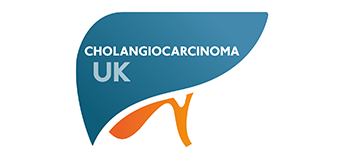Rethink Liver Cancer
AMMF’s Awareness Campaign
AMMF’s Rethink Liver Cancer Campaign, Addressing Inequalities – the video.
AMMF’s Rethink Liver Cancer campaign is committed to highlighting that cholangiocarcinoma (CCA) is a primary liver cancer. Although almost equal in incidence to the far more widely recognised primary liver cancer, hepatocellular carcinoma (HCC) cholangiocarcinoma is less well known, harder to diagnose and overwhelmingly diagnosed late.
Recognising cholangiocarcinoma (bile duct cancer, one of the biliary tract cancers) as a form of liver cancer is a simple but vital reference point for policymakers, health professionals and the wider public to unite around tackling the growing threat presented by this poorly known disease with one of the worst survival rates of any cancer.
With increased incidence and appalling mortality, there is a desperate need for a game changing increase in awareness and a better understanding of cholangiocarcinoma, especially amongst healthcare professionals. Earlier diagnosis is essential for patients to receive the treatments they need in a more appropriate and timely way.
It’s time to Rethink Liver Cancer.
AMMF’s Cholangiocarcinoma Data Project and White Paper
AMMF has commissioned and funded a four-year, first of its kind study, using data from over 50,000 biliary tract cancer patients within the NHS in England.
Carried out by NHS England and Health Data Insight CIC (HDI) in collaboration with partners at Imperial College, London, the research findings provide concrete evidence supporting the urgent need to improve how cholangiocarcinoma is diagnosed and treated. These findings, which underpin AMMF’s new white paper, Rethink Liver Cancer, include:
- Cholangiocarcinoma is a growing, untargeted problem. New evidence demonstrates that this cancer is no longer as rare as previously considered, with patient numbers almost doubling to rates similar to the other, better known type of liver cancer – hepatocellular carcinoma (HCC). For years, national estimates have been inaccurate, regularly describing the incidence of cholangiocarcinoma as involving fewer than half as many cases.
- More than half of those diagnosed with cholangiocarcinoma were given no cancer treatment at all. The numbers of patients who were given treatment, and the types of treatment they received, varied significantly according to where in the country they lived.
- There have been no improvements in cholangiocarcinoma survival rates in decades and people from the most deprived backgrounds were found to be almost 40% less likely to survive after diagnosis compared to the least deprived.
AMMF’s White Paper is launched in Westminster
On 20 February, 2024, during Cholangiocarcinoma Awareness Month, AMMF held a reception in The House of Commons, Westminster, to formally launch the white paper, Rethink Liver Cancer, and to ask all who have the power to make change, to ensure that those with the devastating cancer, cholangiocarcinoma receive better and more equitable care than currently.
The event, hosted by Elliot Colburn, elected Member of Parliament and Chair of the All Party Parliamentary Group on Cancer, was attended by members of government, the health service and many experts in the field of cholangiocarcinoma.
To see AMMF’s day in Westminster in images and the highlights video click the Read More button.
Read MoreWhat is cholangiocarcinoma?
pronounced kol-an-gee-oh-car-sin-oh-ma
Cholangiocarcinoma is a primary liver cancer, and is a biliary tract cancer, the others being gallbladder cancer and ampullary cancer.
A complex and challenging cancer, the exact causes of cholangiocarcinoma in the Western world are unclear, and it is likely that a combination of different risk factors contribute to the disease. To date, most cases in the Western world occur without a known cause or identifiable risk factor.
- Cholangiocarcinoma is the world’s second most common primary liver cancer after hepatocellular carcinoma (HCC).
- Incidence is rising sharply, with significant increases in the number of cases recorded in the UK, Europe and across the world.
- It is no longer a disease of the elderly. More and more cases are being diagnosed in adults of working age, and we don’t know why.
- Cholangiocarcinoma has one of the worst survival rates of any cancer. The 5-year survival rate of 6-9% for CCA in Europe drops to 2% for some types that are not caught early (across all cancers in England, 5-year survival is 54%).
- Potentially curable if caught early. Surgery (liver resection) is currently the only potentially curative treatment.
- Difficult to spot early due to signs and symptoms that can be vague and non-specific to cholangiocarcinoma.
- Mostly diagnosed late and as an emergency via A&E. More needs to be done to help diagnose cholangiocarcinoma at a much earlier stage.
- Often missed, misdiagnosed and managed too late.
What are the symptoms of cholangiocarcinoma?
Unlike those with HCC, people with cholangiocarcinoma (CCA) often do not have a history of liver disease, or any other clearly identifiable symptoms until its advanced stages. Of those diagnosed with HCC, nine out of ten patients have a history of cirrhosis (liver disease) and a well-defined pattern of symptoms like jaundice (yellowing of the eyes and skin, although skin yellowing may be less obvious in people with darker skin types).
In its early stages, there are few obvious signs and symptoms and those that do occur (such as weight loss, general malaise, fatigue and only slightly abnormal liver function tests) can be non-specific to cholangiocarcinoma and occur from other cancerous as well as non-cancerous causes in that area, such as gallstones and inflammation of the bile ducts.
In advanced cholangiocarcinoma, as well as non-specific symptoms, jaundice is the most common symptom (yellowing of the eyes and skin – although skin yellowing may be less obvious in people with darker skin types), dark urine, pale stools, and sometimes itching due to the cancer blocking the flow of bile. Jaundice is the most obvious and visible symptom associated with liver disease, both cancerous and benign.
For more information on cholangiocarcinoma, click here
And for “Fast Facts About Cholangiocarcinoma”, click here
“I had never heard of cholangiocarcinoma when I was diagnosed and didn’t realise that it is a type of liver cancer which is occurring increasingly frequently, including among younger people.
AMMF’s Rethink Liver Cancer campaign is helping to support and educate everyone with the power to improve early detection, ensure more effective treatment and, ultimately, find a cure for this devastating disease.”
Dame Zandra Rhodes

Photo credit: Jonathan Phang
What is Liver Cancer?
There are two main types of primary liver cancer:
- Hepatocellular carcinoma (HCC), which starts in the liver tissue itself
- Cholangiocarcinoma (CCA, bile duct cancers) which starts in the bile ducts (tubes) within the liver or outside the liver
Most people, including doctors and other health professionals, frequently use the term ‘liver cancer’ to mean only the first type – HCC. This can be confusing as it omits the fact that cholangiocarcinoma is also a primary liver cancer. It is important that CCA is as clearly sign-posted as possible because, unlike HCC, it is a disease without a ‘standard’ patient.
Nine out of ten patients with HCC also have a history of cirrhosis (liver disease), and cancer screening is in place for this well-defined disease and cohort of patients. CCA often occurs in those who do not have a history of liver disease. It is also, increasingly, a disease of all ages, with few known risk factors, and it can present without any clearly identifiable symptoms at all until its advanced stages.








